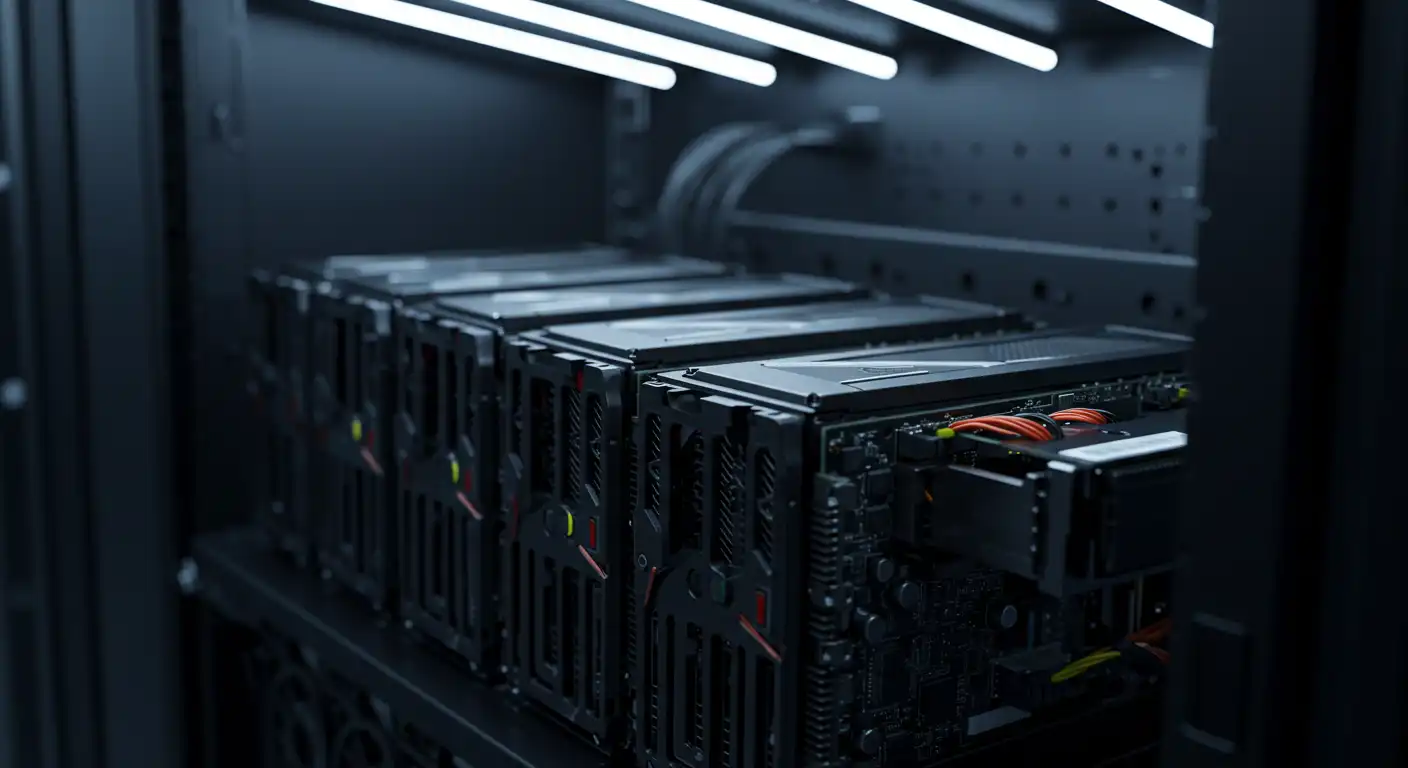
The web hosting landscape has evolved dramatically over the past decade, with the pace of innovation accelerating each year. As we move through 2025, several transformative trends are reshaping how websites are hosted, delivered, and managed. For businesses and developers looking to stay competitive, understanding these trends isn't just about keeping up—it's about leveraging new technologies to gain a strategic advantage.
In this comprehensive overview, we'll explore the most significant web hosting trends of 2025 and how they're changing the digital landscape.
1. Serverless Architecture Goes Mainstream
Serverless computing has moved beyond the early adopter phase and is now firmly in the mainstream of web hosting solutions. This approach, where developers can build and run applications without thinking about servers, has seen widespread adoption for several compelling reasons:
Key Developments in Serverless Hosting
- Enhanced development workflows: Integrated development environments now offer seamless serverless deployment pipelines, reducing the complexity that previously deterred adoption.
- Cost optimization: Pricing models have evolved to address the "cold start" problem, with providers offering always-warm instance options for critical functions.
- Enterprise adoption: Major corporations have embraced serverless for production workloads, driving improvements in observability, debugging, and performance monitoring tools.
- Edge function maturity: Serverless functions running at the edge (closer to users) have become more capable, supporting complex applications rather than just simple tasks.
For businesses, serverless architectures offer unprecedented scalability and cost efficiency. You pay only for the compute resources you actually use, with automatic scaling during traffic spikes and zero costs during idle periods.
2. Edge Computing Transforms Content Delivery
Edge computing—running workloads closer to end users rather than in centralized data centers—has revolutionized how content is delivered in 2025:
The New Edge Hosting Paradigm
- Dynamic content at the edge: Modern edge networks now execute complex application logic, not just cache static content. This reduces latency for dynamic, personalized experiences.
- Improved security: Edge platforms provide a distributed defense against DDoS attacks and other threats, filtering malicious traffic before it reaches the origin server.
- Global performance by default: Deploying an application to an edge network automatically distributes it worldwide, ensuring low latency for all users.
- Reduced origin server load: By handling more requests at the edge, businesses can reduce the size and cost of their backend infrastructure.
This shift means that a powerful content delivery network (CDN) is no longer an optional add-on but a fundamental component of modern hosting architecture.
3. Sustainable and Green Hosting Solutions
Environmental considerations have moved from a nice-to-have feature to a central concern in the hosting industry:
Sustainability Innovations
- Renewable energy commitments: Major cloud providers are increasingly powering their data centers with renewable energy sources like wind and solar.
- Efficient hardware: Data centers are adopting more energy-efficient servers and cooling systems to reduce their overall power consumption.
- Geographic optimization: Some providers allow you to choose data center regions with a lower carbon footprint.
- Carbon impact dashboards: Hosting control panels now include real-time metrics on the environmental impact of your hosting choices.
Businesses are increasingly selecting hosting providers based on their environmental credentials, recognizing both the ethical imperative and the brand value of sustainable digital infrastructure.
4. The Rise of WebAssembly (Wasm) Hosting
WebAssembly, a binary instruction format for a stack-based virtual machine, has matured into a powerful hosting target:
Why Wasm is Gaining Traction
- Language flexibility: Developers can write code in languages like Rust, C++, and Go and compile it to run in any Wasm-compatible environment.
- Near-native performance: Wasm offers significantly better performance than JavaScript for computationally intensive tasks.
- Secure sandboxing: Wasm code runs in a secure, sandboxed environment, providing strong isolation between different applications.
- Specialized hosting platforms: Purpose-built WebAssembly hosting environments offer simplified deployment and management.
This trend is particularly significant for organizations with diverse technology stacks, as it allows for consistent deployment processes regardless of the underlying programming language.
5. AI-Powered Hosting Management
Artificial intelligence has transformed how hosting infrastructure is managed and optimized:
AI-Driven Hosting Innovations
- Predictive scaling: AI systems now anticipate traffic spikes before they occur, pre-warming resources to eliminate performance degradation.
- Automated security analysis: AI algorithms continuously monitor for security threats, identifying and mitigating vulnerabilities in real-time.
- Performance optimization: AI tools analyze application performance and suggest code-level or infrastructure changes to improve speed and efficiency.
- Cost management: AI-driven platforms identify unused resources and recommend cost-saving adjustments to your hosting setup.
6. Next-Generation Containerization
While containers aren't new, their implementation and orchestration have evolved significantly:
Next-Generation Container Hosting
- Simplified orchestration: Kubernetes alternatives focused on developer experience have gained traction, making container deployment more accessible.
- Serverless containers: Platforms like AWS Fargate and Google Cloud Run abstract away the underlying infrastructure, combining the benefits of containers and serverless.
- Improved security: Advances in container isolation and runtime security have made containers a more secure choice for multi-tenant applications.
- GitOps workflows: Using Git as the single source of truth for declarative infrastructure and applications has become the standard for managing containerized deployments.
7. The Proliferation of Specialized Databases
The database landscape has evolved beyond the traditional relational vs. NoSQL dichotomy:
The New Database Paradigm
- Purpose-built databases: Highly specialized database services optimized for specific use cases (time-series, graph, vector, etc.) have proliferated.
- Serverless databases: Databases that automatically scale and charge based on usage are becoming the default choice for new applications.
- Distributed SQL: Databases that combine the scalability of NoSQL with the consistency of traditional SQL are gaining popularity for mission-critical applications.
- Data APIs: Instead of connecting directly to a database, many applications now interact with data through secure, scalable APIs.
8. Zero-Trust Security Models
Security models have evolved to address the increasingly sophisticated threat landscape:
Modern Hosting Security Approaches
- Identity-based access: Access to resources is granted based on verified identity, not network location.
- Micro-segmentation: Networks are divided into small, isolated segments to limit the blast radius of a potential breach.
- Automated compliance: Hosting platforms now offer tools to automate compliance with regulations like GDPR and CCPA.
- Immutable infrastructure: Instead of patching servers, new, updated instances are deployed, reducing the risk of configuration drift and security vulnerabilities.
Conclusion: The Implications for Businesses
These trends collectively point to a hosting landscape that is more powerful, flexible, and accessible than ever before. For businesses, the implications are significant:
- Reduced operational overhead: Modern hosting solutions require less manual management, freeing technical resources for innovation.
- Global reach by default: Edge computing makes worldwide performance optimization automatic rather than a complex add-on.
- Cost alignment with value: Pay-for-what-you-use models ensure hosting costs directly correlate with business activity.
- Environmental responsibility: Sustainable hosting options allow businesses to reduce their digital carbon footprint.
- Accelerated innovation: Developer-friendly hosting environments reduce the friction between idea and deployment.
At MaxSpeedBox, we're committed to helping businesses navigate this evolving landscape. Our hosting solutions incorporate these cutting-edge trends while maintaining the reliability and performance that mission-critical applications demand.
Looking to modernize your hosting infrastructure? Contact our team for a consultation on how these trends can benefit your specific use case.


